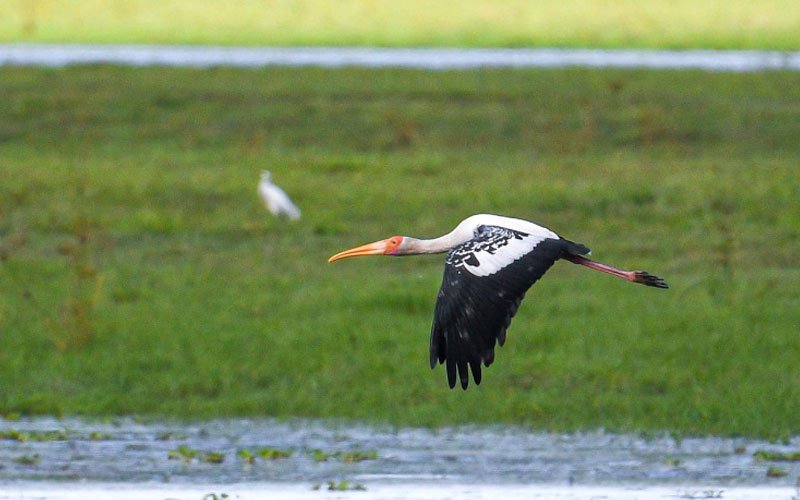Kaziranga, Assam — In a heartening sign for wildlife enthusiasts and conservationists alike, the migratory Painted Storks (Mycteria leucocephala) have returned to Kaziranga National Park after a four-year hiatus. Assam Chief Minister Himanta Biswa Sarma shared the news on X (formerly Twitter), highlighting the significance of their comeback.
“The elegant migratory Painted Storks have made a comeback to Kaziranga’s skies, soaring once again over our wetlands—a proof that nature heals when we protect it. Another win for our conservation efforts,” the Chief Minister posted.
The Painted Stork is known for its striking white plumage with black flight feathers and long, vividly colored beaks. These birds typically migrate to wetlands in India during the winter months, but their absence over the past few years had raised concerns among environmentalists about habitat degradation and ecological balance.
Kaziranga National Park, a UNESCO World Heritage Site famous for its population of one-horned rhinoceroses, has been actively implementing conservation initiatives, including wetland restoration, anti-poaching measures, and habitat protection programs. The return of the Painted Storks is being celebrated as a direct outcome of these ongoing efforts.
Forest officials and local conservation groups have welcomed the storks, noting that their presence indicates a healthy wetland ecosystem and a thriving biodiversity in the region. Visitors and birdwatchers are now eagerly anticipating the opportunity to witness these majestic birds gliding over Kaziranga’s wetlands once again.
Experts suggest that sustained protection of natural habitats, coupled with awareness programs and community involvement, has played a key role in encouraging migratory birds to return after several years.
The Painted Stork’s comeback not only reflects the positive impact of Assam’s conservation policies but also sends a broader message about the resilience of nature when human intervention aligns with ecological preservation.



